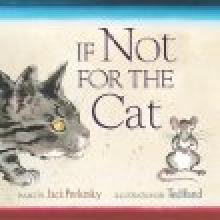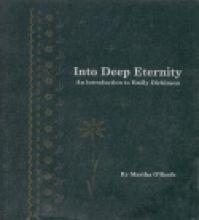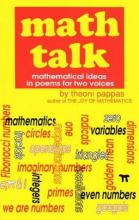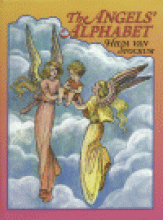Poetry
If Not for the Cat
If not for the cat, And the scarcity of cheese, I could be content.It has something of the simplicity and weight that I find so pleasing in William Carlos Williams. And several others are beginning to work their way in as well. Like this one about the kangaroo:
Safe inside my pouch Sleeps the future of my kind-- Delicate and frail.Nor am I the only one. After only two or three readings my three-year old remembers and recites quite a few lines herself. I have found her picking up the book on her own, flipping through the pages, and reciting what she remembers. Each poem is in the voice of a different animal and Prelutsky's genius is in the personality of the different voices, hard to convey in a so short a form as haiku. I love the way he captures the slow sloth, the hive mind of the ants, (humorously followed immediately by the ant eater), and the threatening presence of the snake and the skunk. Especially memorable are the rounded polysyllables of the jellyfish:
Boneless, translucent, We undulate, undulate, Gelatinously.Ted Rand's paintings are a lovely match, each one has a very different tone, well suited to the paired poem. My favorite is definitely the dark, moody one of the moth drawing close to a candle. Though the bright hummingbird hovering near festive orange nasturtiums is also right up there.
Into Deep Eternity
Math Talk
I have long been a fan of the poems for two voices books by Paul Fleischman. This book puts a twist on the idea by covering math topics in poems. It's a really unique and engaging way to memorize a math concept, reciting it as a poem. A poem for two voices is a poem recited by two people where sometimes the same words are said in tandem, sometimes alternately, and sometimes, the speakers speak at the same time saying different things.
Here is a sample of part of a poem from the book: (The first column is the first speaker and the second column, the second - shown smaller than actual size) 
Some of the math concepts in the poems are fairly simple ideas that would pertain to a grammar school student, however most of the ideas are for middle schoolers or high schoolers. There were a few math concepts I had never heard of, such as fractals, (the geometry of nature), Fibonacci numbers (adding the last two numbers in a series to give the next number), and Mobius strips (circular strip with a twist in it).
While you don't learn everything you need to know about the math concepts in the poems, you get an introduction to the idea and the basic or interesting facts. For tessellations, the reader learns that not all figures tessellate; for triangles, the reader learns that the angles in the figure must equal 180 degrees. Some of the accompanying illustrations are also instructive. I could not have visualized the Mobius strip without the drawing of it.
This is a fun way to talk about these concepts. Trying to say the poems as a team takes a lot of concentration and brings a lot of laughs along the way. The book would make a great addition to a living math program or be a nice break from a formal textbook program.
Recommended for grades 4-12
Pocketful of Posies
The entire book was stitched and photographed, and it is one delightful page after another! Enjoy the book's page at the author's website as it offers many inside views plus this series of posts that show a lot of interesting photos on the making of the book, posted by the author!
The nursery rhymes include many old favorites from Mother Goose as well as some less-familiar ones, but it's the illustrations that absolutely steal the show! (Click on the cover image to get an idea.) Author and illustrator Salley Mavor apparently spent a decade developing and honing her trademark fabric relief technique before attempting to illustrate her first book. Each page is crafted from wool felt and sewn and embroidered with multicolored thread, with characters' faces painted on wooden beads. Mavor likes to make furniture and roofs from driftwood bits, and incorporates other found items such as acorn caps and shells into the pictures. She says that each scene takes nearly a month to complete!
The book's primary audience is preschoolers through grade 1 or so, but older children and adults will love the incredible artistry and attention to detail.
Review updated 26 Mar 2024 by Suchi Myjak.
The Angel's Alphabet
The Harp and the Laurel Wreath
Her choice of poems is flawless. She has included all those listed in Designing Your Own Classical Curriculum, and leans heavily on the classics, as you would expect (Shakespeare, Browning, Keats, Longfellow), but rounds it out with a variety of other authors and poems (including my mother's favorite, High Flight: "Oh, I have slipped the surly bonds of earth....") In addition to poetry, there are "Selections to Memorize": great works of prose such as Lincoln's Second Inaugural Address and Patrick Henry's famous oration. and "Selections for Dictation". She's organized the book according to the stages in the classical curriculum: Grammatical, Dialectical, or Rhetorical. There's even a section for "The Early Years", with lots of favorites from Robert Louis Stevenson and others, as well as a page of Bible verses. And to make this section even more appealing to the littlest homeschoolers, the font is larger there than in the rest of the book.
If this book is a starting point for you, then you'll want to add additional anthologies. To really infuse a love of poetry in your children, and to have a broad enough range of poems for reading aloud as well as memorization, you need work by children's poets such as Dorothy Aldis and Christina Rossetti. In addition, consider purchasing a beautifully illustrated version of Stevenson's Leaves from a Child's Garden of Verses, such as the one by Donna Green (even though many of the poems are reprinted in The Harp and Laurel Wreath), as well as a more eclectic volume such as "Talking Like the Rain" (X. J. Kennedy and Dorothy M. Kennedy).
But even if you already have dozens of volumes of poetry, you need this book. Berquist understands the true purpose of education, she knows what homeschooling moms need, and she knows how to put it all together in an attractive package. Start building another shelf!
There's a rather serious typographical error on page 128 of the first edition which I'd like to bring to your attention. Under The Preamble to the Constitution the phrase
UPDATE: (2/23/2000) This error has been corrected in the latest reprinting.






